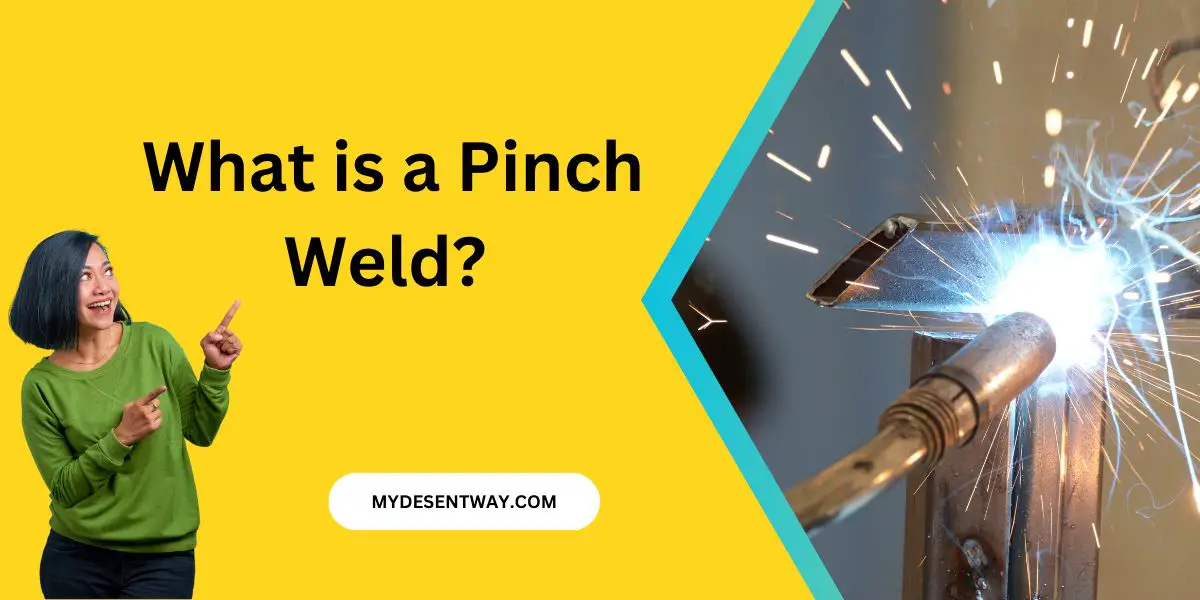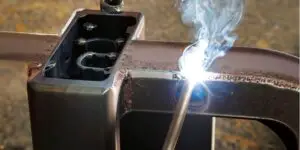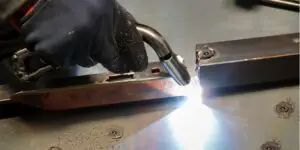Table of Contents
- 1. The Importance of Pinch Welds
- 2. Applications of Pinch Welds
- 3. Assessing Pros and Cons
- 4. Common Issues and Solutions
- 5. Avoiding Pinch Weld Damage
- 6. Safety Measures
- 7. Creating and Repairing Pinch Welds
- 8. Pinch Weld Strength and Quality
- Tips for Using Pinch Welds Safely and Effectively
- Conclusion
- FAQs
Pinch welding is a word that mechanics and car enthusiasts frequently use. However, this term may sound unfamiliar to individuals who are not as knowledgeable about the nuances of auto maintenance. Do not be alarmed; this piece seeks to clarify pinch weld terminology and highlight its significant application in the automobile industry.
1. The Importance of Pinch Welds
Pinch welds might not grab immediate attention, but these structural components are integral parts of a vehicle’s body frame. They serve as crucial attachment points for various elements during the manufacturing process. Understanding their significance begins with grasping their basic structure and types.
What is a pinch weld, exactly?
A pinch weld, often referred to as a rocker panel pinch weld, is a small, raised ridge or seam running along the underside of a vehicle’s body. It’s usually located where the vehicle’s body panels and floor pan meet. This welded seam is designed to provide structural strength and support to the vehicle’s body.
Types of Pinch Welds
Pinch welds come in various configurations, each serving specific purposes:
- Flat Pinch Welds: These are the most common type, featuring a straight, flat design. They’re relatively straightforward and are often found in many vehicle models.
- L-Shaped Pinch Welds: Characterized by their L-shaped profile, these welds offer enhanced structural rigidity due to their additional bend.
- Z-Shaped Pinch Welds: These welds feature a zigzag or Z-shaped pattern, providing increased strength and stability.
Understanding these distinct types helps in recognizing their variations in different vehicles and comprehending their specific applications during manufacturing and maintenance.
Pinch welds play a pivotal role in maintaining a vehicle’s structural integrity, and exploring their types sheds light on their diverse functionalities in the automotive industry.
This detailed content covers the essence of what pinch welds are and delves into their different types, offering a comprehensive understanding of their significance in vehicle construction and maintenance.
2. Applications of Pinch Welds
Pinch welds are not merely structural elements; they serve practical purposes across various applications in automotive construction and maintenance.
-
Automotive Assembly
During the vehicle manufacturing process, pinch welds play a crucial role in assembling different body components. They act as anchor points for attaching body panels, reinforcing the vehicle’s structural integrity. Their secure attachment ensures the proper alignment and stability of the vehicle’s body, contributing significantly to its overall safety.
-
Using Pinch Welds for Jack Placement
One of the primary applications of pinch welds for vehicle owners is their utilization as jack points. When lifting a vehicle for maintenance or tyre changes, locating and properly using the pinch welds as jack points is essential. Incorrect jack placement can cause structural damage or compromise safety.
Understanding the designated jack points, typically indicated in the vehicle’s manual, ensures safe and damage-free lifting, avoiding potential harm to the vehicle’s body or undercarriage.
Pinch welds, therefore, serve dual purposes: aiding in the vehicle’s assembly during manufacturing and providing reliable jack points for vehicle owners during maintenance.
This detailed content elaborates on the practical applications of pinch welds, emphasizing their role in automotive assembly and their significance as safe jack points for vehicle maintenance, ensuring a comprehensive understanding of their functionalities.
3. Assessing Pros and Cons
Pinch welds, like any automotive component, come with their own set of advantages and disadvantages, influencing their usage and maintenance.
Advantages of Pinch Welds
- Structural Support: Pinch welds provide essential structural support, contributing to the overall strength of the vehicle’s body frame.
- Alignment and Stability: They aid in aligning and stabilizing body panels during assembly, ensuring proper fit and reducing potential rattling or misalignment issues.
- Jack Points: Serving as designated jack points, they facilitate safe and efficient vehicle maintenance by providing secure lifting locations.
Disadvantages of Using Pinch Welds
- Vulnerability to Damage: Pinch welds, if subjected to excessive force or corrosion, can be susceptible to damage, compromising the vehicle’s structural integrity.
- Corrosion Concerns: Exposure to environmental elements can lead to rust and corrosion along the pinch welds, potentially weakening their strength over time.
- Limited Weight Support: While reliable for lifting with appropriate equipment, pinch welds might not support heavy loads, necessitating caution during use.
Understanding these pros and cons aids in making informed decisions regarding the utilization and maintenance of pinch welds, ensuring their effective and safe usage in vehicle operations.
This detailed content provides an overview of the advantages and disadvantages associated with pinch welds, offering insights into their benefits and vulnerabilities, allowing readers to make informed decisions regarding their usage and maintenance.
4. Common Issues and Solutions
Pinch welds, despite their structural importance, are prone to specific issues that can affect a vehicle’s integrity. Recognizing these issues and implementing solutions is crucial for maintaining a vehicle’s safety and performance.
- Corrosion and Rust
One prevalent problem with pinch welds is their susceptibility to corrosion and rust, especially in regions exposed to moisture or road salt. Over time, this corrosion weakens the welds, compromising their structural strength.
Solution: Regular inspection and preventive measures, such as rustproofing or applying protective coatings, help mitigate corrosion risks. Additionally, prompt treatment of any signs of corrosion can prevent further damage.
-
Dent
Accidental impacts or improper use of jacks can cause dents along the pinch welds, potentially affecting their structural integrity.
Solution: Careful handling during maintenance procedures and using appropriate jack pads or stands can minimize denting risks. Inspection after impacts ensures any damage is addressed promptly.
-
Breakage
Under extreme conditions or due to prolonged exposure to stress, pinch welds might crack or break, posing severe safety risks.
Solution: Timely inspection for signs of weakening and, if identified, seeking professional assessment and repair is crucial to prevent potential breakage.
Understanding these common issues and applying preventive measures ensures the longevity and reliability of pinch welds, contributing to a vehicle’s overall safety.
This detailed content highlights common issues associated with pinch welds and offers practical solutions to mitigate these problems, emphasizing the importance of proactive maintenance for ensuring the structural integrity of the vehicle.
5. Avoiding Pinch Weld Damage
Preserving the integrity of pinch welds involves adopting specific practices and techniques to prevent damage during vehicle maintenance and usage.
-
Proper Jacking Techniques
- Do Not Jack From the Pinchweld Directly: Directly applying pressure to the pinch welds while lifting the vehicle can cause damage. It’s essential to avoid placing the jack directly on the welds.
- Use a Jack Pad: Placing a rubber or specially designed jack pad on the pinch welds before lifting distributes the load and prevents direct contact, safeguarding against damage.
- Use the Right U-channel Jackstand: When securing the vehicle on jack stands, employing U-channel stands designed to cradle the pinch welds evenly helps avoid unnecessary stress.
- Implement Pinchweld Rubber Seals: Utilizing rubber seals or protective covers around the pinch weld areas shields them from corrosion and damage during regular use.
Adhering to these practices safeguards the pinch welds from harm, ensuring their longevity and functionality for safe vehicle maintenance.
This detailed content provides comprehensive guidelines on safeguarding pinch welds during vehicle maintenance, emphasizing the importance of proper jacking techniques and protective measures to prevent damage and corrosion.
6. Safety Measures
Understanding safe practices when jacking up a vehicle and being aware of the potential dangers associated with improper methods is crucial for both personal safety and preserving the vehicle’s integrity.
1. Jacking Up Safely
- Where to Jack the Vehicle: Referring to the vehicle’s manual or markings indicating designated jack points ensures safe and secure lifting without damaging the pinch welds.
- Dangers of Incorrect Jacking: Applying force to improper points or using inadequate equipment can damage the vehicle’s body or undercarriage, leading to safety hazards.
2. Ensuring Safe Procedures
- Change the Jack Stand Points: Once the vehicle is lifted, placing jack stands at designated points provides stable support, reducing the risk of accidents during maintenance.
- Use the Correct Jack: Employing a jack suitable for the vehicle’s weight capacity ensures safe lifting without overloading the pinch welds.
- The Rennstand by Safe Jack: Utilizing specialized equipment like the Rennstand, designed to securely support pinch welds, ensures added safety during maintenance tasks.
- Universal Pinch Weld Rennstand Jack Pad: Specifically engineered jack pads evenly distribute weight, preventing concentrated pressure on the welds.
Implementing these safety measures minimizes risks associated with jacking up a vehicle, preserving both personal safety and the vehicle’s structural integrity.
This detailed content emphasizes the importance of adhering to safety measures during vehicle jacking procedures, highlighting the risks of incorrect practices and providing guidelines for ensuring a safe and secure maintenance process.
7. Creating and Repairing Pinch Welds
Understanding the process of creating and repairing pinch welds is essential for both manufacturers and individuals seeking to maintain their vehicles’ structural integrity.
How to Create Different Types of Pinch Welds
- Flat-Shaped: Manufacturers use specialized equipment to create straight, flat pinch welds during the assembly process. These welds provide a foundational structure for the vehicle’s body panels.
- L-Shaped: This involves bending the metal sheet at a right angle, forming an L-shaped weld. These welds offer increased rigidity and are often used in critical areas for added strength.
- Z-Shaped: Creating a zigzag pattern involves additional manufacturing techniques. These welds provide enhanced stability and load-bearing capacity in specific areas of the vehicle’s frame.
Repairing Pinch Welds and Associated Costs
- Identifying Damage: Regular inspection is crucial to identify any dents, rust, or deformations in pinch welds that may compromise their integrity.
- Professional Repair: Seek professional assistance for repairing damaged pinch welds. Costs can vary based on the extent of damage and the repair method required.
- Preventive Maintenance: Regular cleaning, rustproofing, and protective coatings can prevent extensive damage and reduce repair costs.
Understanding the creation and repair processes helps vehicle owners appreciate the complexity of pinch welds and highlights the significance of timely maintenance for prolonging their lifespan.
This detailed content sheds light on the processes involved in creating and repairing different types of pinch welds, emphasizing the importance of regular inspection and preventive maintenance for preserving the structural integrity of a vehicle.
8. Pinch Weld Strength and Quality
Assessing the strength and ensuring the quality of pinch welds is crucial for maintaining a vehicle’s structural integrity.
Identifying the Strongest Part of a Pinch Weld
- Load Distribution: Pinch welds are designed to evenly distribute loads across the vehicle’s body. The areas closer to the vehicle’s frame often exhibit higher strength due to better structural support.
- Manufacturing Standards: Quality pinch welds are a result of precise manufacturing standards, ensuring uniformity and strength across the weld’s length.
Ensuring High-Quality Pinch Welds
- Quality Inspection: Thoroughly inspecting pinch welds for any signs of deformation, corrosion, or weaknesses is vital.
- Material and Coating: High-quality materials and protective coatings enhance the durability and resistance of pinch welds against corrosion and external factors.
- Professional Assessment: Seeking professional inspection and guidance can identify potential weaknesses and ensure necessary reinforcement or repair.
Understanding the areas of strength within pinch welds and implementing measures for maintaining quality ensures the vehicle’s safety and longevity.
This detailed content highlights the factors contributing to the strength and quality of pinch welds, emphasizing the importance of regular inspection and adherence to manufacturing standards for ensuring their durability and reliability.
Tips for Using Pinch Welds Safely and Effectively
- Regular Inspection: Routinely examine pinch welds for signs of damage, corrosion, or deformation. Early detection lets care and action be taken at the right time.
- Follow Manufacturer Recommendations: Adhere to the vehicle manufacturer’s guidelines regarding jack points and maintenance practices to avoid potential damage.
- Invest in Proper Equipment: Utilize appropriate tools like jack pads or specialized stands designed for pinch welds to ensure safe lifting and maintenance procedures.
- Educate Yourself: Understanding the vehicle’s construction and pinch weld locations enhances your ability to perform maintenance tasks safely.
- Prioritize Preventive Maintenance: Implementing rustproofing, protective coatings, and timely repairs can significantly extend the lifespan of pinch welds.
- Seek Professional Assistance: For complex issues or extensive damage, consult professional mechanics or body shops specialized in automotive structural repairs.
By incorporating these considerations and tips into your vehicle maintenance routine, you can ensure the longevity and reliability of pinch welds while promoting overall vehicle safety.
This detailed content summarizes the key insights gathered throughout the discussion of pinch welds, offering practical tips for their safe and effective use and empowering readers to maintain their vehicles’ structural integrity.
Conclusion
In short, understanding what is a pinch Weld really matters for anyone who owns a car. These welded seams, even though they might not catch your eye, are super important for keeping your car safe and strong. If you regularly check and take care of them, your pinch welds will stay in great shape, making your driving safer and more enjoyable.
Just remember, when it comes to your car’s safety, even the little things like pinch welds are a big deal that you should never ignore.
video by garage time
FAQs
Are pinch welds the same on all vehicles?
No, pinch welds’ design and location can vary between different makes and models of vehicles. It’s essential to consult your vehicle’s manual for specific information.
Can I use any jack on pinch welds?
It’s best to use a jack that is designed for automotive use and compatible with pinch welds. Using the wrong jack can damage the welds and the vehicle.
How can I identify the location of pinch welds on my vehicle?
You can find information on the location of pinch welds in your vehicle’s owner’s manual. Additionally, you can visually inspect the underside of your vehicle for the welds, typically located near the wheel arches.
Do I need a professional to inspect my vehicle’s pinch welds?
While you can visually inspect pinch welds yourself, it’s advisable to have a professional mechanic perform a thorough inspection during regular maintenance checks.
Can damaged pinch welds be repaired?
Yes, damaged pinch welds can often be repaired by a skilled welder or mechanic. However, the extent of the damage and the weld’s condition will determine whether repair is feasible or if replacement is necessary.


